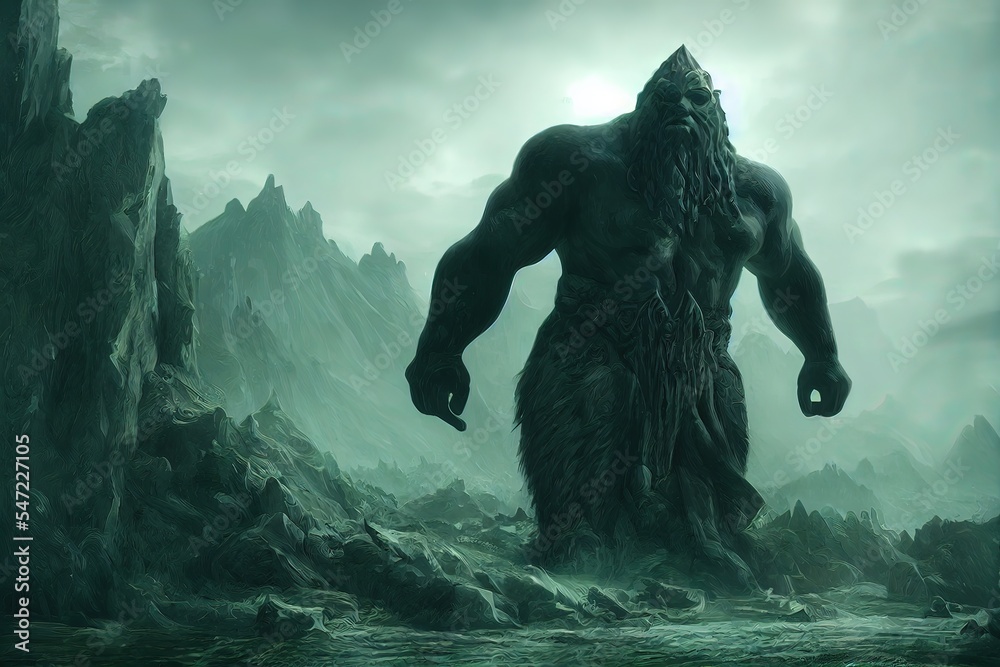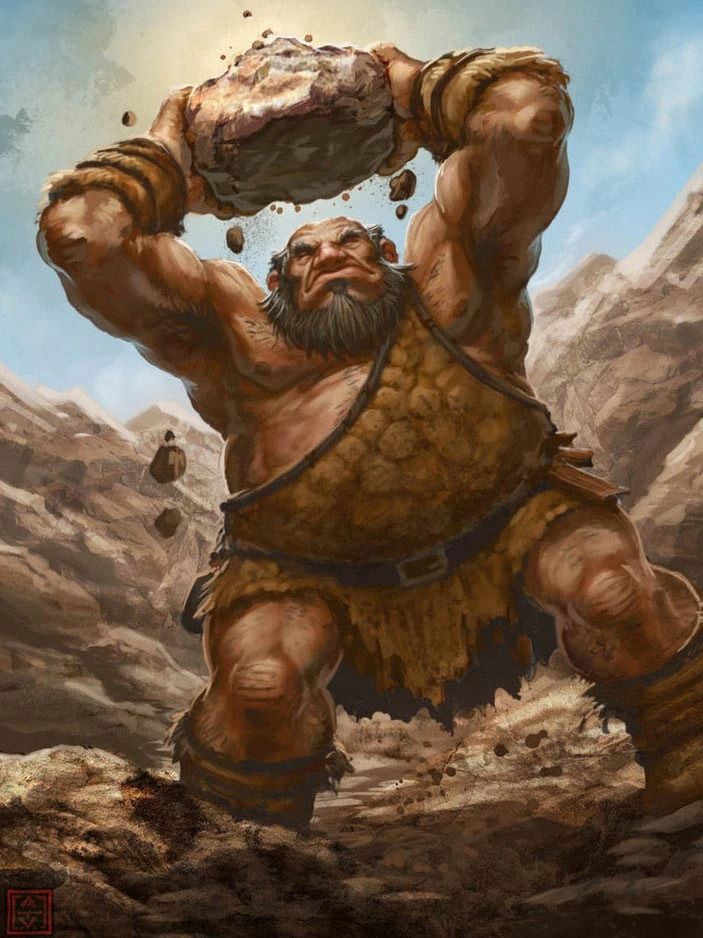Understanding Visual Balance: Exploring Giant And Small Forms
Have you ever stopped to really look at how different sizes and shapes come together? It's a rather interesting thought, isn't it? Our world, you know, is full of amazing contrasts. Think about a towering mountain next to a tiny flower, or maybe a huge, old oak tree with its delicate, new leaves. These kinds of pairings, where something giant meets something small, often create a striking visual impact, and that's actually something we see everywhere.
It's almost like our minds are drawn to these dramatic differences. We see them in nature, in the things people build, and even in art. Sometimes, these striking proportions get described in very vivid, everyday language, like the phrase "giant tits small waist." While that particular expression often refers to a specific human figure, the underlying idea of a very large feature paired with a slender, central part is a concept that goes way beyond just people. It's about how contrasting sizes can create a powerful, memorable shape, and that, is that, something truly captivating.
So, today, we're going to take a closer look at this fascinating interplay of "giant" and "small." We'll explore how these contrasting elements work together to create balance and visual interest in many different areas. We'll consider examples from the natural world, from creative design, and even from the way things grow and develop. It’s a chance to appreciate the artistry of proportion, whether it's found in a landscape or a carefully crafted object, and how these forms just make us feel something.
- Garden Innavannah
- Ruth Chris Private Event
- Best Blue Oyster Cultongs
- Who Played Lurch On Addams Family
- Hud Unit
Table of Contents
- The Allure of Contrasting Forms
- Nature's Masterpieces: Giant and Small in Harmony
- Design and Architecture: Balancing Scale
- The Art of Proportion: Beyond the Obvious
- Cultivating Greatness: Growth and Space
- The Ephemeral Nature of "Giant" Ideals
- The "Gentle Giant" Principle
- FAQs About Proportions and Visual Balance
The Allure of Contrasting Forms
There's something incredibly appealing about seeing a very large element meet a very slender one. This kind of visual dynamic creates a sense of tension and balance, drawing our gaze. It's not just about size; it's about the relationship between different parts. For instance, consider the "Georgia giant® hybrids" we sometimes hear about in fishing circles. These fish, you know, are bred to grow quite large, much bigger than your regular bream. When they are given the right conditions, they truly become impressive, a real "giant" in their watery home. This shows us how something can truly stand out when it reaches its full, impressive scale.
On the flip side, we've all seen what happens when things don't have enough room or resources. Small, stunted fish, for example, often result when there are thousands of little fish with not enough food, oxygen, and space to go around. This contrast, between the thriving "giant" and the struggling "small," really highlights the importance of environment and support for growth. It shows us that true impressiveness, a kind of natural grandeur, often comes from having just the right conditions, which is pretty neat.
This idea of giant and small working together isn't limited to living things, either. Think about a "big ol' tomato" that's supposed to grow from a certain plant. That large, rounded fruit sitting on a relatively slender stem is another simple, everyday example of this striking contrast. It’s a natural pairing that just seems to work, visually speaking, and it's quite satisfying to behold.
- Outlets En Austin Tx
- Maine Cabin Masters Jedi
- Willowbrook Mall Appletore
- Skylar Digginsmithtats
- Alice Braga Moraes
Nature's Masterpieces: Giant and Small in Harmony
Nature, in its infinite wisdom, is a master of combining giant and small elements to create breathtaking scenes. Think of towering rock formations that narrow dramatically at their base, or vast canyons carved by tiny trickles of water over millennia. These natural wonders demonstrate how immense features can be supported by, or emerge from, surprisingly delicate or slender foundations. It's a powerful lesson in how form works, really.
Consider the mighty redwood trees, for instance. Their immense trunks, truly giant in scale, rise from the earth, tapering as they reach skyward. Their branches, while strong, are relatively small compared to the overall mass of the tree, yet they support a vast canopy of tiny leaves. This interplay of giant and small is what gives these trees their iconic and awe-inspiring presence. It’s a very natural way to create something truly grand, you see.
Even a single flower can show this principle. A large, showy bloom might sit atop a delicate, slender stem. The stem, though small, is strong enough to hold up the "giant" flower, creating a beautiful and balanced form. This balance is something we often take for granted, but it's actually everywhere we look in the natural world, if you just take a moment to notice.
Design and Architecture: Balancing Scale
Architects and designers have long understood the power of contrasting sizes. They use this principle to create structures that are both stable and visually exciting. Imagine a grand building with a massive, imposing facade. Often, this "giant" structure is balanced by smaller, more intricate details or by a narrower, more delicate entrance. This creates a sense of proportion that guides the eye and makes the building feel welcoming, or perhaps, just truly impressive.
Think about a classic monument, for example. It might have a "giant" dome or a very broad base, but then it tapers to a "small" spire or a slender column. This design choice isn't random; it's a deliberate way to create visual harmony and a sense of upward movement. It’s a bit like how a "gentle giant" might be very large but also possess a surprising grace or precision in its movements, you know.
Even in everyday objects, this balance is at play. A sturdy lamp base might support a much larger lampshade. Or a broad, comfortable chair might have elegant, slender legs. These are all examples of how designers use the interplay of "giant" and "small" to create objects that are both functional and pleasing to look at. It's a fundamental aspect of good design, actually, and something we interact with constantly.
The Art of Proportion: Beyond the Obvious
Artists throughout history have explored the concept of proportion, often playing with "giant" and "small" elements to evoke emotion or convey meaning. A sculptor might create a massive figure with surprisingly delicate hands, or a painter might depict a tiny individual against a vast, sweeping landscape. These choices aren't just about realism; they're about creating a particular feeling or message.
Consider how some artists use exaggerated forms. They might make one part of a figure "giant" to emphasize its importance, while other parts remain "small" to create a sense of vulnerability or focus. This deliberate manipulation of scale is a powerful tool in artistic expression. It allows them to tell a story or convey an idea without saying a single word, which is pretty amazing, really.
Even in abstract art, the relationship between large shapes and small details can be crucial. A huge canvas might feature just a few tiny, precisely placed marks. This contrast can create a sense of vastness or emptiness, or it can draw the viewer's eye to those minute elements, highlighting their significance. It’s a very subtle way of communicating, but it's incredibly effective, you see.
Cultivating Greatness: Growth and Space
The idea of something becoming "giant" often depends on having the right environment and enough room to grow. Just like those "Georgia giant® hybrids" need space to thrive and avoid becoming "small stunted fish," any form, whether natural or conceptual, needs the right conditions to reach its full potential. This is a very important point, you know, about allowing things to truly flourish.
When we think about cultivating something great, whether it's a plant, a skill, or an idea, we're essentially providing the "space" and "resources" for it to expand and become "giant." Without that, it might remain "small" or underdeveloped. It’s a principle that applies to so many areas of life, really, from personal growth to community development. We've had several over a pound from this plant, which just shows what happens with good care.
This notion of nurturing growth also ties into the idea of balance. While we might strive for something "giant," we also need to ensure that the supporting elements, the "small" parts, are strong and capable. It’s about creating a sustainable system where everything can flourish without becoming overwhelmed. That’s a truly thoughtful way to approach things, isn't it?
The Ephemeral Nature of "Giant" Ideals
Sometimes, what seems "giant" or ideal today might shift or change over time. Think about the "hybrid ga giant bream" we discussed earlier. The issue you will have with them is you will have to start over every 3 or 4 years. They are poor spawners and start to revert back to the different original species. This reminds us that some forms, even those we cultivate to be "giant," might not be permanent. They can revert or change, showing a kind of natural cycle.
This concept applies beyond just fish. In design, in fashion, and even in our perceptions of beauty, what is considered "giant" or ideal can evolve. What was once celebrated as a striking proportion might later be seen differently. It’s a reminder that ideals are often fluid, not fixed, and that's just how things go, you see.
This constant change means that our appreciation for "giant" and "small" forms needs to be flexible. It encourages us to look beyond fleeting trends and appreciate the underlying principles of balance and contrast that endure. It’s a good way to stay open-minded about what we find appealing, and to appreciate the beauty in all its varied forms, which is pretty cool.
The "Gentle Giant" Principle
The phrase "gentle giant" often describes something large that also possesses a surprising softness, grace, or thoughtful quality. This idea, you know, can be applied to the interplay of "giant" and "small" forms. It’s about how something grand can still have delicate nuances, or how a powerful presence can be softened by intricate details. Slow motion useless turkey tracker, this one is my favorite from the gentle giant, if you look and listen close a man will show you what he is, Montgomery Gentry. This song captures that feeling of something powerful yet nuanced, you see.
When a "giant" form is paired with a "small" waist or a delicate supporting structure, it can create this "gentle giant" effect. The large element feels less imposing, more approachable, because of the refined details or the slender connection. It's a visual trick that makes something monumental feel more balanced and harmonious. It's a very clever way to make something truly impressive, you know, without being overwhelming.
This principle teaches us that true greatness, whether in nature, art, or design, often lies not just in sheer size, but in the thoughtful relationship between its various parts. It's about how the "giant" and the "small" can work together to create something truly exceptional and memorable, something that is once in everyone’s lifetime, not just a once in a lifetime buck. It’s about balance, after all.
FAQs About Proportions and Visual Balance
How do different proportions impact visual appeal?
Different proportions, you know, can really change how something looks and feels. When you have a "giant" element next to a "small" one, it often creates a strong contrast that draws the eye and can make the form feel more dynamic. It's about creating a sense of balance and interest, making the viewer want to look longer. It’s a very fundamental part of how we see things, really.
What are some natural examples of contrasting sizes?
Nature is full of examples! Think about a massive mountain range with a tiny, winding river at its base, or a huge, ancient tree with delicate, new sprouts growing around its roots. Even a single large flower on a slender stem shows this. These are all ways nature creates visual harmony through the interplay of "giant" and "small" forms, which is quite beautiful.
How do artists and designers use the concept of "giant" and "small"?
Artists and designers use "giant" and "small" elements to guide your eye, create a sense of scale, and evoke certain feelings. They might use a large background with small figures to show vastness, or a big, bold shape with tiny, intricate details to add refinement. It's a way to make their work more expressive and engaging, and it’s a powerful tool, you see. Learn more about visual composition on our site.
The study of proportions and visual balance is a rich and fascinating area. It helps us appreciate the beauty in the world around us, from the grandest landscapes to the smallest details. It's about seeing how everything connects and how size plays a part in creating a sense of harmony. We can learn so much from just observing these relationships. You can also find more information about architectural principles by clicking here.
- Johnny Depp Vanessa Paradis
- Films Justin Timberlake Has Been In
- Skylar Digginsmithtats
- Lee Minho
- Mastiff Mix Dogs

fantasy giant monster in concept Norse Mythology Stock Illustration

VTT DH Giant Glory Advanced | Giant Bicycles FR

Giant | Monster Wiki | FANDOM powered by Wikia